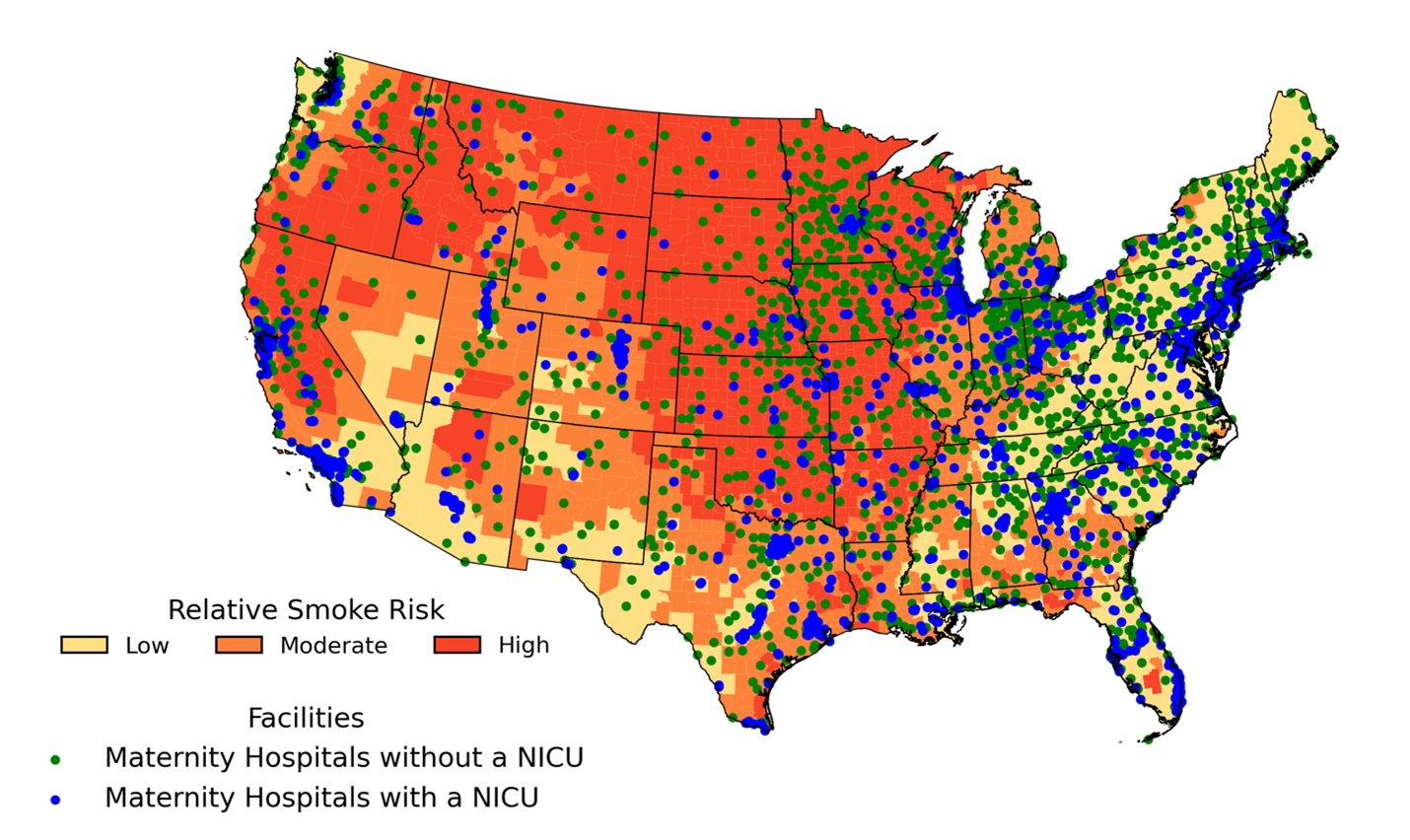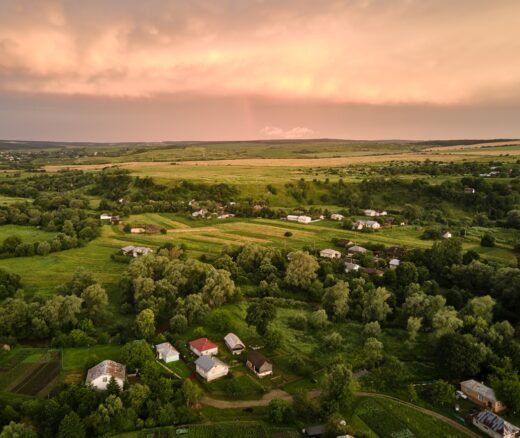
LDI Research Helped Shape Pennsylvania’s New Working Pennsylvanians Tax Credit
Pa.’s New Bipartisan Tax Credit is Designed to be Simple and Refundable – Reflecting Core Points From Penn LDI Researchers Who Briefed State Leaders
Population Health
Blog Post

A first-ever study co-authored by LDI Senior Fellow Scott Lorch and led by Michel Boudreaux of the University of Maryland documented perinatal health care resources in communities prone to wildfire smoke. Wildfire smoke is hazardous to everyone, but pregnant people and their infants are particularly vulnerable. Prenatal smoke exposure has been linked to adverse birth outcomes, including low birth weight and pre-term birth. Pollutants in wildfire smoke raise the risks of hypertensive disorders of pregnancy, gestational diabetes, and cardiovascular events.
A map based on the study findings shows the distribution of the relative smoke-risk classifications in 3,108 U.S. counties from 2016 to 2020, superimposed with the locations of maternity care hospitals and NICUs. Counties with moderate or high risk of wildfire smoke exposure have fewer specialized maternity and neonatal health care resources than low-risk counties. High-risk counties are more likely to lack a maternity care hospital and a Neonatal Intensive Care Unit (NICU). According to the researchers, these high-risk areas are home to about 7.3 million reproductive-age women who experience over 460,000 births annually. Another 20 million women who have 1.1 million births every year live in counties with moderate smoke exposure.
High smoke exposure compounds existing infrastructure challenges. The median number of obstetrician-gynecologists was found to be zero in high-risk counties. Family physicians filled gaps, but the lack of obstetric specialists raises concerns for high-risk pregnancies. Maternity services in these areas are typically small, remote, and low-volume, which may affect their ability to triage and transfer patients with complications.
Millions of women of reproductive age and their infants will require timely health care in smoke-affected areas. Proactive adjustments to care delivery and funding policies can help ensure more protection for perinatal populations.
Potential actions include:
As the risk of wildfires grows, policymakers and clinicians must account for the resulting environmental health challenges when designing health system responses.
The study “Perinatal Resources and Wildfire Smoke” was published in Medical Care on May 12, 2025 by Michel Boudreaux, Maranna Yoder, Evan Ellicott, Molly Passarella, and Scott Lorch.


Pa.’s New Bipartisan Tax Credit is Designed to be Simple and Refundable – Reflecting Core Points From Penn LDI Researchers Who Briefed State Leaders

Announcing Bold New Goals While Crippling the Infrastructure Needed to Achieve Them

Promising New Evidence and What’s Next

From 1990 to 2019, Black Life Expectancy Rose Most in Major Metros and the Northeast—but Gains Stalled or Reversed in Rural Areas and the Midwest, Especially for Younger Adults

A Penn LDI Seminar Focuses on Why They’re Important for the Future

Former Philadelphia Health Commissioner Warns That Gutting the CDC, Undermining Vaccines, and Politicizing Science Will Leave the U.S. Dangerously Unprepared for the Next Pandemic